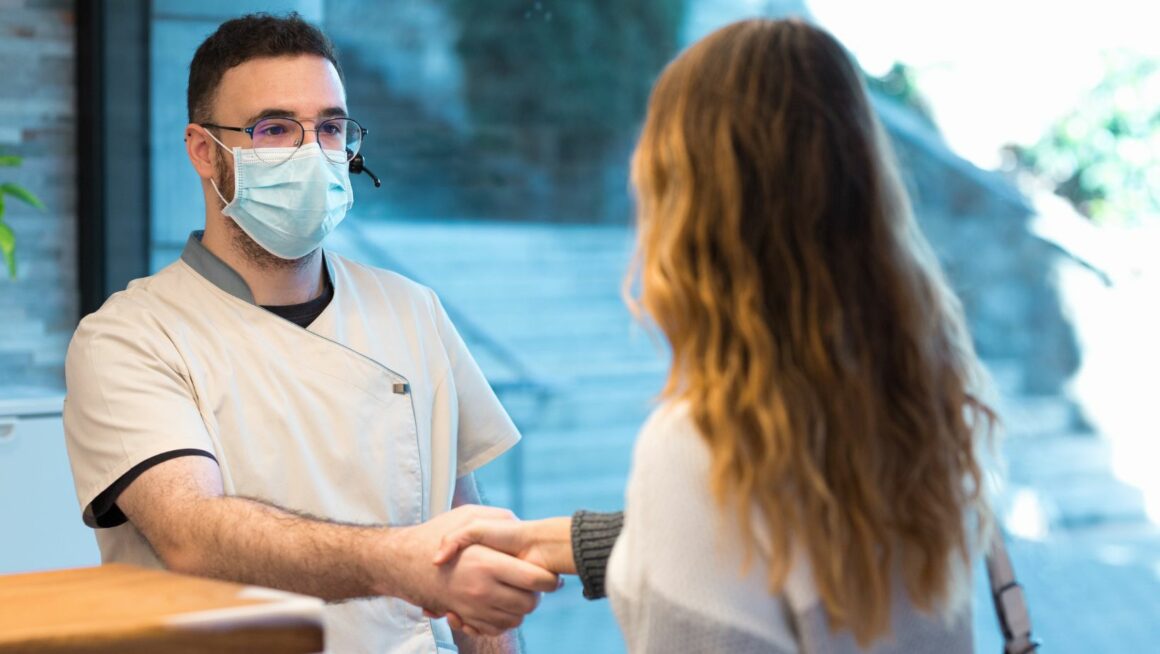Meta Description: Modern technology is impacting the field of medical education in numerous ways. It has made medical learning convenient and accessible.
Technology has become part of the lives of everyone in today’s generation. It has outstandingly changed in the past few decades. Technology has changed our lives. Also, at the same time, it has helped us transform with it. In today’s generation, technology has done more than anything to help us live a convenient life. Technology has changed multiple industries, and medical education is one of them. Technological advancements have transformed how medical knowledge is gained and applied, specifically in the past few years. Technology has done many things, from virtual reality simulations to online learning forums. It has opened up new possibilities in medical education, particularly for students and healthcare professionals. Here, we will explore the positive influence of technology on medical education. Moreover, we will discuss how it shapes the future of medical education.
How Technology is Helping to Meet the Challenges of Medical Education
Medical students are extremely hard-working. They have their own set of challenges while learning. They must study 10-12 hours daily to get the required results. However, using technology in medical education aims to make learning convenient. Another reason for adopting technology is to increase the students’ decision-making ability. There are many ways in which technology is making medical learning easier and more convenient than before. We have mentioned some of them below.” – Anuj Chadha, Marketing Specialist at Diginerve
Mobile and AI-powered Learning
Mobile devices are now indispensable tools for medical students. Nowadays, plenty of medical applications are available on smartphones. These applications and mobile-friendly educational resources give students quick access. They instantly get medical references, interactive anatomy models, and drug databases. These mobile tools let students learn on the go. By doing so, students make the most of their time. Additionally, one of the major benefits of using mobile apps is that you only need to carry some of your medical books everywhere. Students can only take some practical and clinical books with them if they have these applications on their mobile phones.
On the other hand, Artificial intelligence (AI) is making its mark in medical education. AI-driven forums can analyze students’ interactions with learning materials. Also, it can identify areas of difficulty and suggest specific interventions or resources. The advanced technology has the potential to provide personalized feedback and support. This feedback and support improves the overall learning experience.
Training for Surgery
Surgical training is an important area of medical education and training. All of the students must learn it thoroughly to ace in their field. Virtual reality can give it a cutting edge. You must be thinking, how? Medical students, as freshers, require experience while they treat any patient for surgery. However, it is risky to the patient’s health. Not letting them deal with a situation will keep them from the necessary experience and knowledge. Therefore, VR-based surgery is an amazing way out of such a scenario. The prime reason for this is it gives extensive training to students. Plus, it will not even harm any patient.
Mastery of Medical Skills
“Virtual reality will give extensive learning modules to medical students. They will let them learn at their own pace. Additionally, it will help students understand the concepts extensively. Virtual reality education also offers medical experiments and tools like surgery and nursing. They are accessible to students without time restrictions. Hence, students will also gain hands-on experience. Plus, they will also get the time to practice and use tools. The best thing is that they can use these tools to practice till they excel with virtual reality for medical learning.” – Martin Seeley, CEO of Mattress Next Day
Google Glass
Google Glass is the most advanced technology recently used in medical education. It is a wearable pair of glasses that shows the information in the eyes of the user. Professionals use this glass in their surgeries. The glass is being used to assist in showing the radiological images. Therefore, by doing so, the surgeons get the clinical information during the surgery. Similarly, it can be used as a learning platform for medical freshers. It will help them see the radiological images clearly and learn better.
Enhanced Learning Experience
“One of the crucial benefits of technology in medical education is the enhanced learning experience. Interactive digital platforms complement traditional textbooks and lectures. Technology completely replaces these conventional ways of learning at many institutions. It allows students to engage with the material more personalized and dynamically. Virtual anatomy lets students explore the human body in a three-dimensional virtual environment. It provides a hands-on experience that was previously limited to cadaver dissection. With the help of advancements in technology, students learn in more practical ways.” – Emerson Carlson, Founder of Medicaresharks.
Simulation and Training
Technology has also played an important role in transforming medical simulations and training. Some examples of these transformations are Simulation-based training programs and virtual reality systems. Additionally, utilizing high-fidelity mannequins is another example. All of these enable students and medical professionals to practice critical procedures. They practice crucial scenarios in a safe and controlled environment in these methodologies.

Also, these simulations help develop decision-making abilities and clinical skills. Furthermore, it also helps in enabling teamwork and fostering competence and confidence. Through this learning, students will be prepared before working with real patients.
Blockchain Technology
Most people relate blockchains with cryptocurrency technology like Bitcoin. However, you may need to learn that it is also an element that can be utilized in medical education. A blockchain is a database that connects chunks of information. It does this in a unique way that can not be modified. The data is stored in various locations. All of the blockchains need to match to be authentic. This type of built-in security is vital for things like formal medical exams. Students cannot change the questions or modify exam answers or content. Blockchain technology is one of the wonderful modern advancements. It makes the medical education sector better.
Accessible and Convenient Learning
Through the advent of online platforms, medical education has become more convenient. Students can now access plenty of resources. These resources include textbooks, lectures, and research articles, with merely a few clicks. Massive E-learning platforms and Open Online Courses offer flexibility in learning.

Also, it lets students study at their own pace and convenience. Consequently, it breaks down barriers like time constraints and geographical limitations.
Networking and Collaborative Learning
Technology has changed medical education from a solitary pursuit to a collaborative experience. Online communities, discussion forums, and social media have played a major role. It enables students, healthcare professionals, and educators worldwide to connect. It lets them collaborate and exchange ideas on projects and research. This interconnectedness also fosters an international medical community. This community promotes the sharing of experiences, knowledge, and best practices. This ultimately benefits the medical industry globally and the students learning it.
Cutting-edge Research and Innovation
Technology in medical learning goes beyond the classroom. It extends into innovation and research. Furthermore, technological advancements have also enabled the collection and analysis of huge datasets. It resulted in breakthroughs in certain areas. These areas include personalized medicine, genomics, and artificial intelligence. Medical researchers and students have access to powerful tools and resources. These tools and resources help them discover new frontiers. Through these tools, they also contribute to scientific advancements. Plus, they drive advancements in the medical sector.
Conclusion
We can not overstate the role of technology in medical education. It provides an enhanced learning experience and facilitates simulation-based training. Technology has changed the way medical knowledge is gained and applied. It has made education more convenient and accessible. Plus, it has also made it interactive and attractive. Additionally, it fuels research and innovation. As technology changes, medical education will continue to adapt to these advancements. This will consequently shape the future of healthcare. Moreover, it will also produce a new generation of tech-savvy healthcare professionals. Modern technologies have made a profound impact on medical education. Consequently, students benefit from this transformation, making their learning more convenient.



